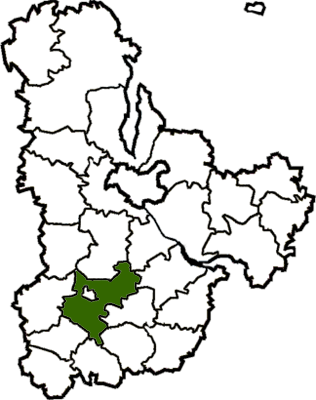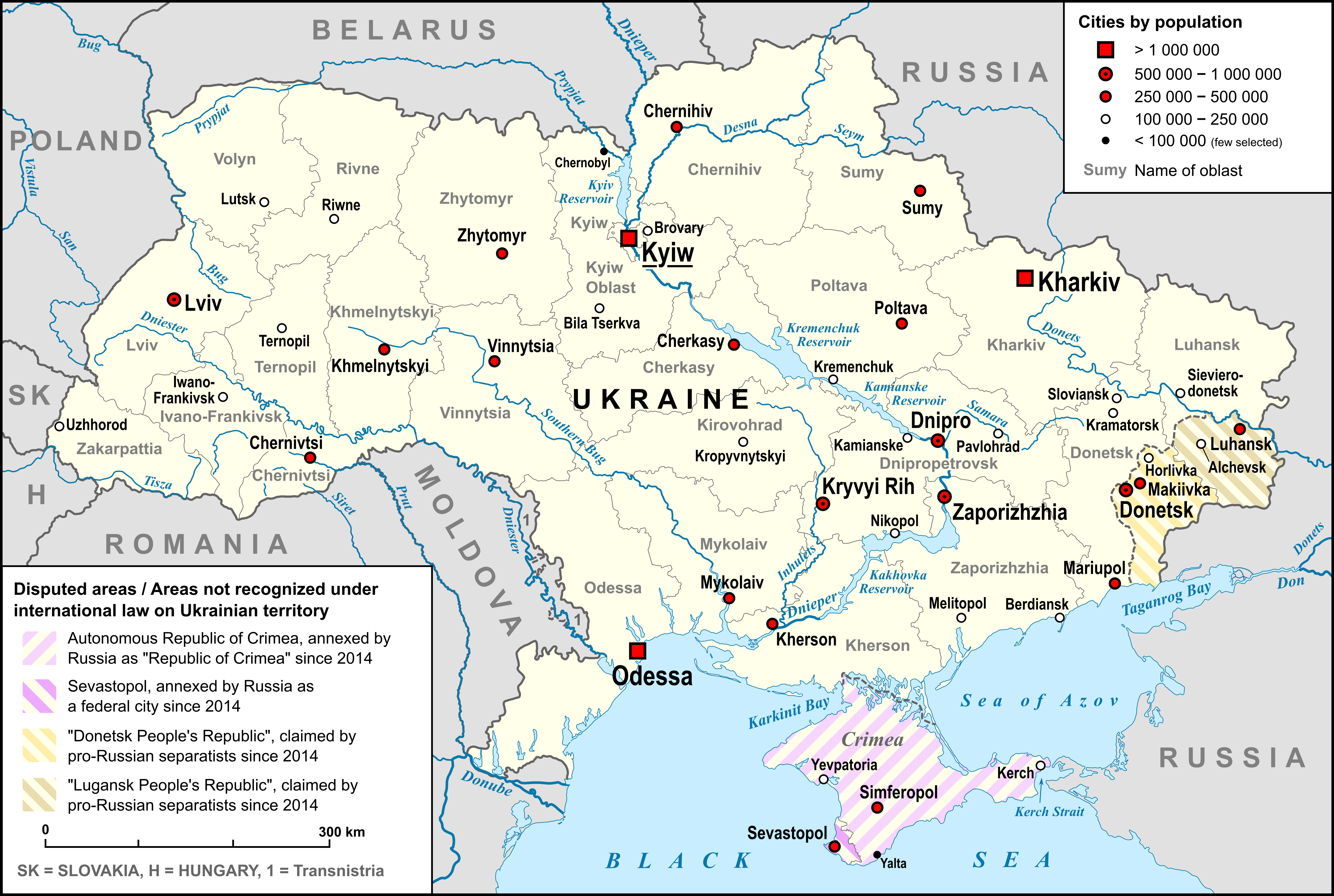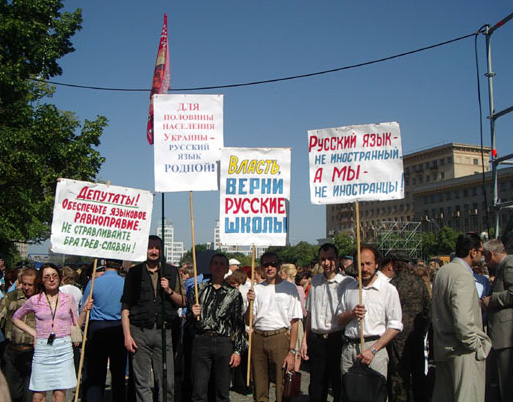|
Skvyra
Skvyra (, ) is a city in Bila Tserkva Raion, Kyiv Oblast (region) of central Ukraine. Skvyra has an area of . It hosts the administration of Skvyra urban hromada, one of the hromadas of Ukraine. Its population is approximately Name In addition to the Ukrainian (''Skvyra''), the name of the city in Yiddish is ''Skver'', . History The ancient town of Skvyra was completely destroyed at the end of the 16th century. In 1736, Skvyra was mentioned as a village (''selo'') leased by a Jewish lessee. According to the census of 1765, there were 124 houses in Skvyra, 51 of which belonged to Jews. In 1775, 116 Jews lived in Skvyra, in 1784 there were 204, and in 1787, 144. After Skvyra was included in the Pale of Settlement the town's Jewish community increased. Its Jewish population was 2,184 in 1847 and grew to 8,910 in 1897 — 49.5% of the general population. At the end of the 19th century Skvyra had seven synagogues, a parochial school, a hospital, a pharmacist and a district doct ... [...More Info...] [...Related Items...] OR: [Wikipedia] [Google] [Baidu] |
Skvyra Raion
Skvyra Raion () was a raion (district) in Kyiv Oblast of Ukraine. Its administrative center was the city of Skvyra. The raion was abolished on 18 July 2020 as part of the administrative reform of Ukraine, which reduced the number of raions of Kyiv Oblast to seven. The area of Skvyra Raion was merged into Bila Tserkva Raion. The last estimate of the raion population was . At the time of disestablishment, the raion consisted of one hromada In Ukraine, a hromada () is the main type of municipality and the third level Administrative divisions of Ukraine, local self-government in Ukraine. The current hromadas were established by the Cabinet of ministers of Ukraine, Government of Uk ..., Skvyra urban hromada with the administration in Skvyra. References {{Authority control Former raions of Kyiv Oblast 1923 establishments in Ukraine Ukrainian raions abolished during the 2020 administrative reform ... [...More Info...] [...Related Items...] OR: [Wikipedia] [Google] [Baidu] |
Bila Tserkva Raion
Bila Tserkva Raion () is a raion (district) in Kyiv Oblast of Ukraine. Its administrative center is the city of Bila Tserkva. Population: . On 18 July 2020, as part of the administrative reform of Ukraine, the number of raions of Kyiv Oblast was reduced to seven, and the area of Bila Tserkva Raion was significantly expanded. Six abolished raions, Rokytne, Skvyra, Stavyshche, Tarashcha, Tetiiv, and Volodarka Raions, as well as the city of Bila Tserkva, which was previously incorporated as a city of oblast significance and did not belong to the raion, and parts of Bohuslav and Vasylkiv Raions, were merged into Bila Tserkva Raion. The area of the raion before the reform was . The January 2020 estimate of the raion population was Subdivisions Current After the reform in July 2020, the raion consisted of 13 hromadas: Before 2020 Before the 2020 reform, the raion consisted of three hromadas, * Fursy rural hromada with the administration in Fursy; * Mala Vilshanka rural hroma ... [...More Info...] [...Related Items...] OR: [Wikipedia] [Google] [Baidu] |
Skvyra Urban Hromada
Skvyra urban hromada () is a hromada of Ukraine, located in Bila Tserkva Raion, Kyiv Oblast. Its administrative center is the city Skvyra. It has an area of and a population of 31,695, as of 2020. The hromada contains 45 settlements: 1 city (Skvyra), and 44 villages: See also * List of hromadas of Ukraine There are 1,469 hromadas (, ) in Ukraine. They were formed in 2020 (there are no hromadas in Kyiv, Sevastopol and in the Autonomous Republic of Crimea). A hromada is designated ''urban hromada'' if its administration is located in a city; ''set ... References {{Kyiv Oblast subdivisions Hromadas of Kyiv Oblast 2020 establishments in Ukraine States and territories established in 2020 ... [...More Info...] [...Related Items...] OR: [Wikipedia] [Google] [Baidu] |
Skver (Hasidic Dynasty)
Skver (also Skvir, Skvere, Skwere, or Square; ) is a Hasidic Judaism, Chasidic dynasty founded by Rebbe Yitzchok Twersky in the city of Skver (known in Yiddish), or Skvyra, in present-day Ukraine during the mid-19th century. Adherents of the Rebbe#Chasidic rebbe, rebbes of Skver are known as ''Skverer Hasidim''. The Skver dynasty is a branch of the Chernobyl (Hasidic dynasty), Chernobyl dynasty. Its founder, Rebbe Yitzchok, also known as Reb Itzikl, was one of the eight sons of Rabbi Mordechai of Chernobyl, Mordechai, the Maggid of Chernobyl. There are currently three rebbes of the Skverer dynasty: * David Twersky (Skverer Rebbe), David Twersky, who leads the largest and most prominent branch, headquartered in New Square, New York. * Yechiel Michl Twersky, son of the late Rebbe David ("Reb Duvid'l") Twersky, who heads the Skver-Boro Park community. * Yitzchok Twersky, son of the late Reb Mottel Twersky, who leads the Skver-Flatbush community. Philosophy and lifestyle Skverer H ... [...More Info...] [...Related Items...] OR: [Wikipedia] [Google] [Baidu] |
List Of Cities In Ukraine
There are 463 populated places in Ukraine, populated places in Ukraine that have been officially granted city status () by the Verkhovna Rada, the country's parliament, as of 23 April 2025. Settlements with more than 10,000 people are eligible for city status although the status is typically also granted to settlements of historical or regional importance. Smaller settlements are Populated places in Ukraine#Rural settlements, rural settlements () and villages (). Historically, there were systems of city rights, granted by the territorial lords, which defined the status of a place as a ''misto'' or ''selo''. In the past, cities were self-governing and had several privileges. The list of cities is roughly ordered by population and the 2022 estimates are compared to the 2001 Ukrainian census, except for Chernobyl for which the population is an unofficial estimate. The City with special status, cities with special status are shown in ''italic''. The average population size is 62,000. ... [...More Info...] [...Related Items...] OR: [Wikipedia] [Google] [Baidu] |
Kyiv Oblast
Kyiv Oblast (, ), also called Kyivshchyna (, ), is an Administrative divisions of Ukraine, oblast (province) in central and northern Ukraine. It surrounds, but does not include, the city of Kyiv, which is administered as a city with special status. However, Kyiv also serves as the Capital (political), administrative center of the oblast. The Kyiv metropolitan area extends out from Kyiv city into parts of the oblast, which is significantly dependent on the urban economy and transportation of Kyiv. The population of Kyiv Oblast is Its largest city is Bila Tserkva, with a population over 200,000. The Chernobyl Exclusion Zone is in the northern part of Kyiv Oblast. It is administered separately from the oblast and public access is prohibited. History Kyiv Oblast was created as part of the Ukrainian Soviet Socialist Republic on February 27, 1932 among the first five original oblasts in Ukraine. It was established on territory that had been known as Ruthenian land. Earlier histo ... [...More Info...] [...Related Items...] OR: [Wikipedia] [Google] [Baidu] |
Raions Of Ukraine
A raion (; ), often translated as district, is the second-level Administrative divisions of Ukraine, administrative division in Ukraine. Raions were created in a 1922 administrative reform of the Soviet Union, to which Ukraine, as the Ukrainian Soviet Socialist Republic, belonged. On 17 July 2020, the Verkhovna Rada (Ukraine's parliament) approved an administrative reform to merge most of the 490 raions, along with the "City of regional significance (Ukraine), cities of regional significance", which were previously outside the raions, into just 136 reformed raions. Most tasks of the raions (education, healthcare, sport facilities, culture, and social welfare) were taken over by new hromadas, the subdivisions of raions.Where did 354 ... [...More Info...] [...Related Items...] OR: [Wikipedia] [Google] [Baidu] |
Talmud Torah
Talmud Torah (, lit. 'Study of the Torah') schools were created in the Jewish world, both Ashkenazic and Sephardic, as a form of religious school for boys of modest backgrounds, where they were given an elementary education in Hebrew language, Hebrew, the scriptures (especially the Torah), and the Talmud (and ''halakha''). This was meant to prepare them for ''yeshiva'' or, particularly in the movement's modern form, for Jewish education at a high school level. The Talmud Torah was modeled after the ''cheder'', a traditional form of schooling whose essential elements it incorporated, with changes appropriate to its public form rather than the ''cheder's'' private financing through less formal or institutionalized mechanisms, including tuition fees and donations. In the United States, the term ''Talmud Torah'' refers to the afternoon program for boys and girls after attending public school. This form of Jewish education was prevalent from the mid–19th century through "the 1940s a ... [...More Info...] [...Related Items...] OR: [Wikipedia] [Google] [Baidu] |
Russian Language In Ukraine
Russian language, Russian is the most common first language in the Donbas and Crimea regions of Ukraine and the city of Kharkiv, and the predominant language in large cities in the East Ukraine, eastern and South Ukraine, southern portions of the country. The usage and status of the language is the subject of political disputes. Ukrainian language, Ukrainian is the country's sole state language since the adoption of the Constitution of Ukraine, 1996 Constitution, which prohibits an official bilingual system at state level but also guarantees the free development, use and protection of Russian and other languages of national minorities. In 2017 a new ''Law on Education'' was passed which restricted the use of Russian as a language of instruction. Nevertheless, Russian remains a widely used language in Ukraine in pop culture and in informal and commerce, business communication. History of the Russian language in Ukraine The East Slavic languages originated in the language spoken ... [...More Info...] [...Related Items...] OR: [Wikipedia] [Google] [Baidu] |
2001 Ukrainian Census
The 2001 Ukrainian census is to date the only census of the population of independent Ukraine. It was conducted by the State Statistics Committee of Ukraine on 5 December 2001, twelve years after the last Soviet Union census in 1989.In 2021, there will most likely be no all-Ukrainian census - Minister (21 April 2020) The next Ukrainian census was planned to be held in 2011 but has been repeatedly postponed. [...More Info...] [...Related Items...] OR: [Wikipedia] [Google] [Baidu] |
Oblasts Of Ukraine
An oblast (, ; ), sometimes translated as region or province, is the main type of first-level administrative divisions of Ukraine, administrative division of Ukraine. The country's territory is divided into 24 oblasts, as well as one Autonomous republic of Ukraine, autonomous republic and two City with special status, cities with special status. As Ukraine is a unitary state, oblasts do not have much legal scope of competence other than that which is established in the Constitution of Ukraine, Ukrainian Constitution and devolved by law. Articles 140–146 of s:Constitution of Ukraine#Chapter IX: Territorial Structure of Ukraine, Chapter XI of the constitution deal directly with local authorities and their competence. Oblasts are divided into Raions of Ukraine, raions, with each oblast having between three and eight raions following the Raions of Ukraine#July 2020 reform, July 2020 reform. General characteristics In Ukraine, the term ''oblast'' denotes a primary administrative ... [...More Info...] [...Related Items...] OR: [Wikipedia] [Google] [Baidu] |
Sonderkommando
''Sonderkommandos'' (, ) were Extermination through labor, work units made up of Nazi Germany, German Nazi death camp prisoners. They were composed of prisoners, usually Jews, who were forced, on threat of their own deaths, to aid with the disposal of gas chamber victims during the Holocaust. The death-camp ''Sonderkommandos'', who were always inmates, were unrelated to the ''SS-Sonderkommandos'', which were ''ad hoc'' units formed from members of various SS offices between 1938 and 1945. The German term was part of the vague and euphemism, euphemistic language which the Nazis used to refer to aspects of the Final Solution (e.g., ''Einsatzkommando'', "deployment units"). Death factory workers ''Sonderkommando'' members did not participate directly in killing; that responsibility was reserved for the SS, while the ''Sonderkommandos'' primary duty was disposing of the corpses. In most cases, they were inducted immediately upon arrival at the camp and forced into the position ... [...More Info...] [...Related Items...] OR: [Wikipedia] [Google] [Baidu] |





